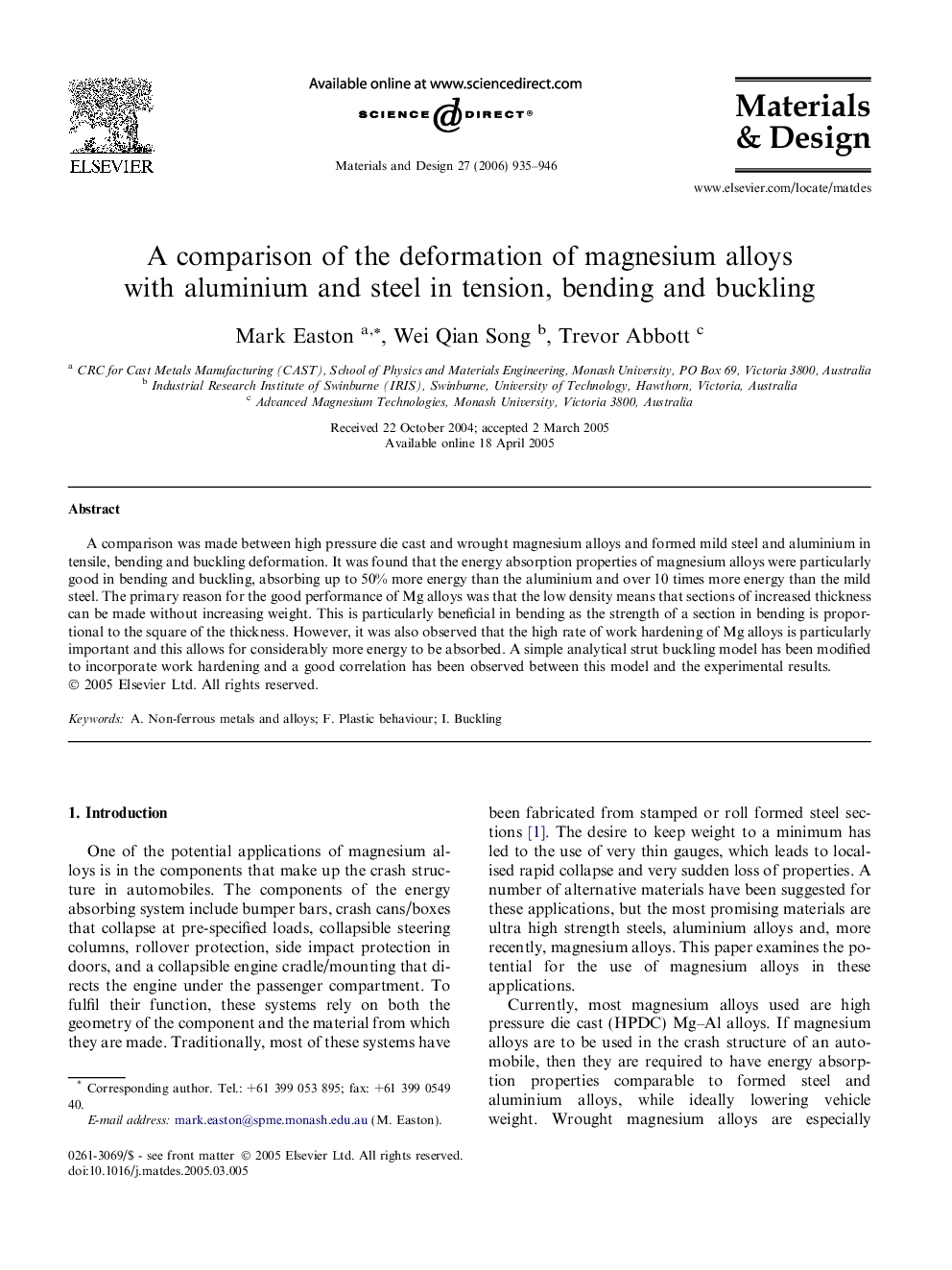| Article ID | Journal | Published Year | Pages | File Type |
|---|---|---|---|---|
| 833713 | Materials & Design (1980-2015) | 2006 | 12 Pages |
A comparison was made between high pressure die cast and wrought magnesium alloys and formed mild steel and aluminium in tensile, bending and buckling deformation. It was found that the energy absorption properties of magnesium alloys were particularly good in bending and buckling, absorbing up to 50% more energy than the aluminium and over 10 times more energy than the mild steel. The primary reason for the good performance of Mg alloys was that the low density means that sections of increased thickness can be made without increasing weight. This is particularly beneficial in bending as the strength of a section in bending is proportional to the square of the thickness. However, it was also observed that the high rate of work hardening of Mg alloys is particularly important and this allows for considerably more energy to be absorbed. A simple analytical strut buckling model has been modified to incorporate work hardening and a good correlation has been observed between this model and the experimental results.
